Bias and Variance
- 8 minutes read - 1676 wordsIntroduction
In Machine Learning different error sources exist. Some errors cannot be avoided, for example, due to unknown variables in the system analyzed. These errors are called irreducible errors. On the other hand, reducible errors, are errors that can be reduced to improve the model’s skill. Bias and Variance are two of the latter. They are concepts used in supervised Machine Learning to evaluate the model’s output compared to the true values. For a Machine Learning model to be generalizable to new unseen data with high predictive skill, it is important that bias and variance are balanced.
Bias
The bias in a Machine Learning model is a systematic error in the predictions due to wrong assumptions during the modeling process. It describes the deviation from the model’s prediction to the true target data. Mathematically, the bias is defined as
with
Possibilities to reduce the Bias
In general, a low bias is desirable. There is, however, no recipe for how to reduce it. The following methods can be tried.
Select a more complex model architecture. If the selected model is too simple compared to the underlying data, the bias will always be high. For example, if a linear model is used to model a non-linear relationship, the model will never be able to capture the underlying pattern, no matter how long and with how much data is trained.
Increase the number of input features. More complexity can not only be introduced by the model structure itself but also by using more input features. The additional features can help to identify the modeled relationship.
Gather more training data. A larger training dataset can help to learn the underlying pattern between input features and target data.
Decrease regularization. Regularization techniques are used to prevent overfitting and make the model more generalizable. This is useful if the model shows high variance, as we will see in the next section. However, if the bias is high reducing the regularization may help.
Variance
Variance is a term from statistics, which measures the spread of a variable around its mean. In Machine Learning it describes the change in the predictions when different subsets are used for training, or in other words the variability of the model’s prediction. Mathematically the variance is described as the expected value of the square of the difference between the predicted values and the expected value of the predictions
with
Possibilities to reduce the Variance
To make the model generalizable to new data, a low variance is desirable. As for the bias, there is no recipe to achieve this. The following methods may help to reduce the variance.
Select a less complex model. High variance often results from a model that is too complex, that fits the specific training data sample too well and by doing that oversees the general pattern.
Use cross validation. In cross validation, the training data is split into different subsets that are used to train the model. Tuning the hyperparameters on different subsets can make the model more stable and reduce the variance.
Select relevant features. Analog to reducing the bias by increasing the number of features, we can try to reduce the variance by removing features and with that reduce the complexity of the model.
Use regularization. Regularization adds an extra term to the loss function, which is used to weigh features by their importance.
Use ensemble models. In Ensemble learning, multiple models are used and aggregated into one single prediction. Different types of ensemble models exist, Bagging is especially suited to reduce the variance.
The following table shows and summarizes all possible combinations of Bias and Variance.
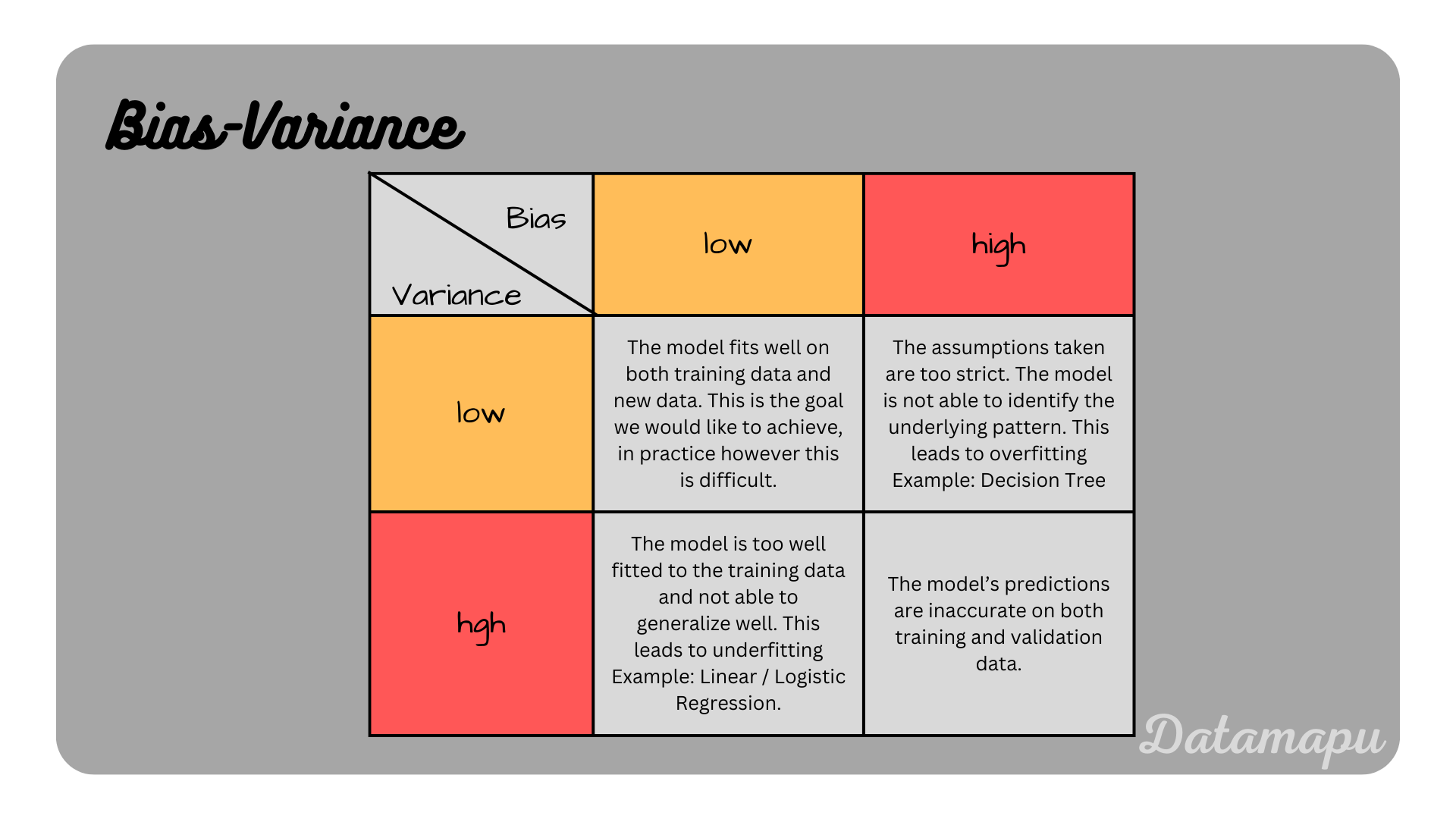 Overview about the combinations of bias and variance.
Overview about the combinations of bias and variance.
The effect of Bias and Variance is often illustrated using a dartboard as shown in the following plot.
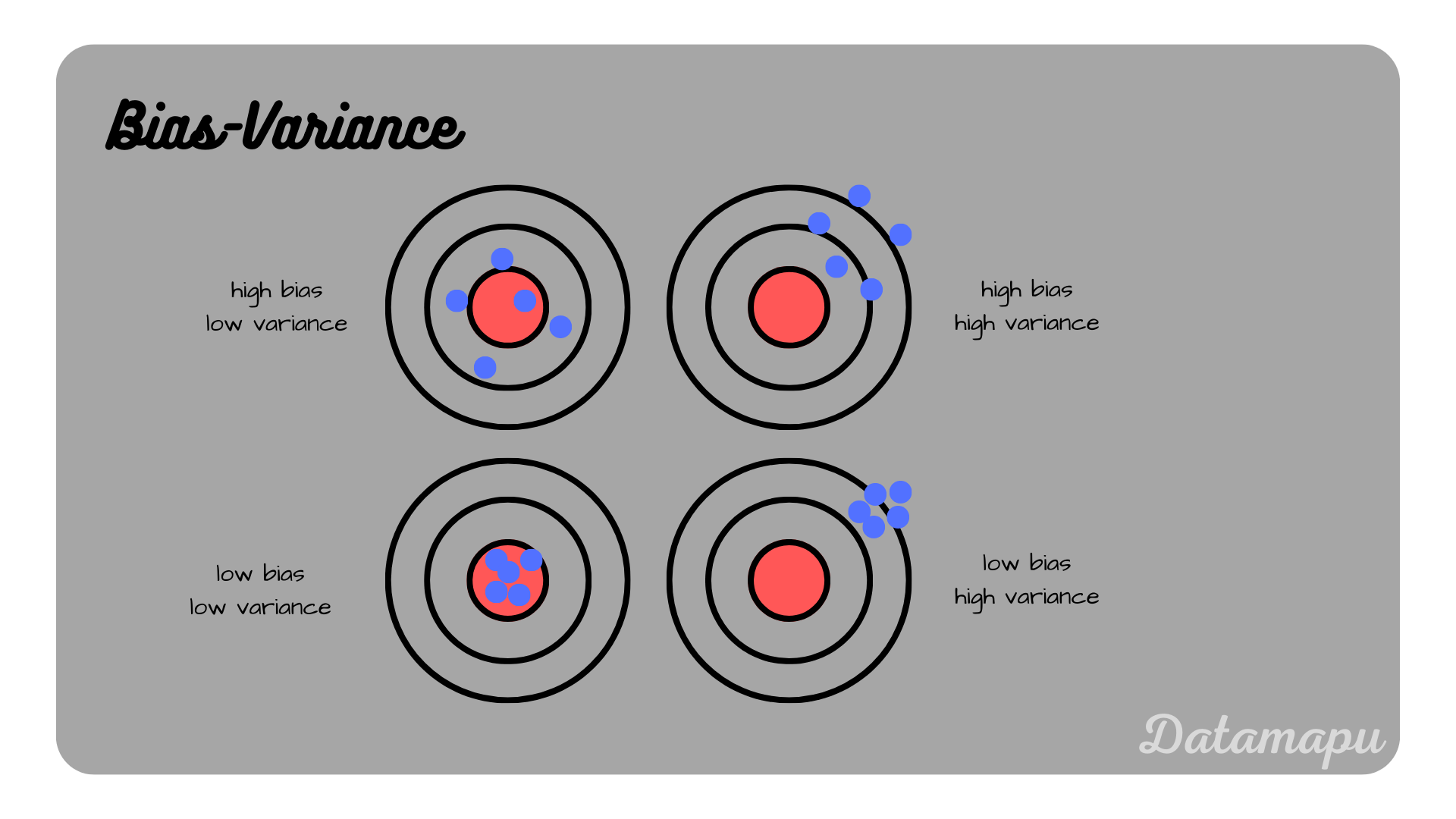 Illustration of the combinations of bias and variance.
Illustration of the combinations of bias and variance.
Bias-Variance Tradeoff
Concluding the above derivations, it is in general desirable to achieve a low bias as well as a low variance. This is however difficult. Intuitively this is clear because a model cannot be simple and complex at the same time. Mathematically, the bias and the variance are part of the total error of a Machine Learning model. Let
Because of the linearity of the expected value this equal to
Let’s consider these three terms individually. We can reformulate
Since the true values
We can use the following formula of the variance for a variable
and reformulate it as
to rewrite this equation. Since we assumed
Using the equation for the variance, the last term of equation (1) can be written as
Putting (2) and (3) back into equation (1) and using the indepence of
This can be written as
In other words the total error in a Machine Learning model is
with
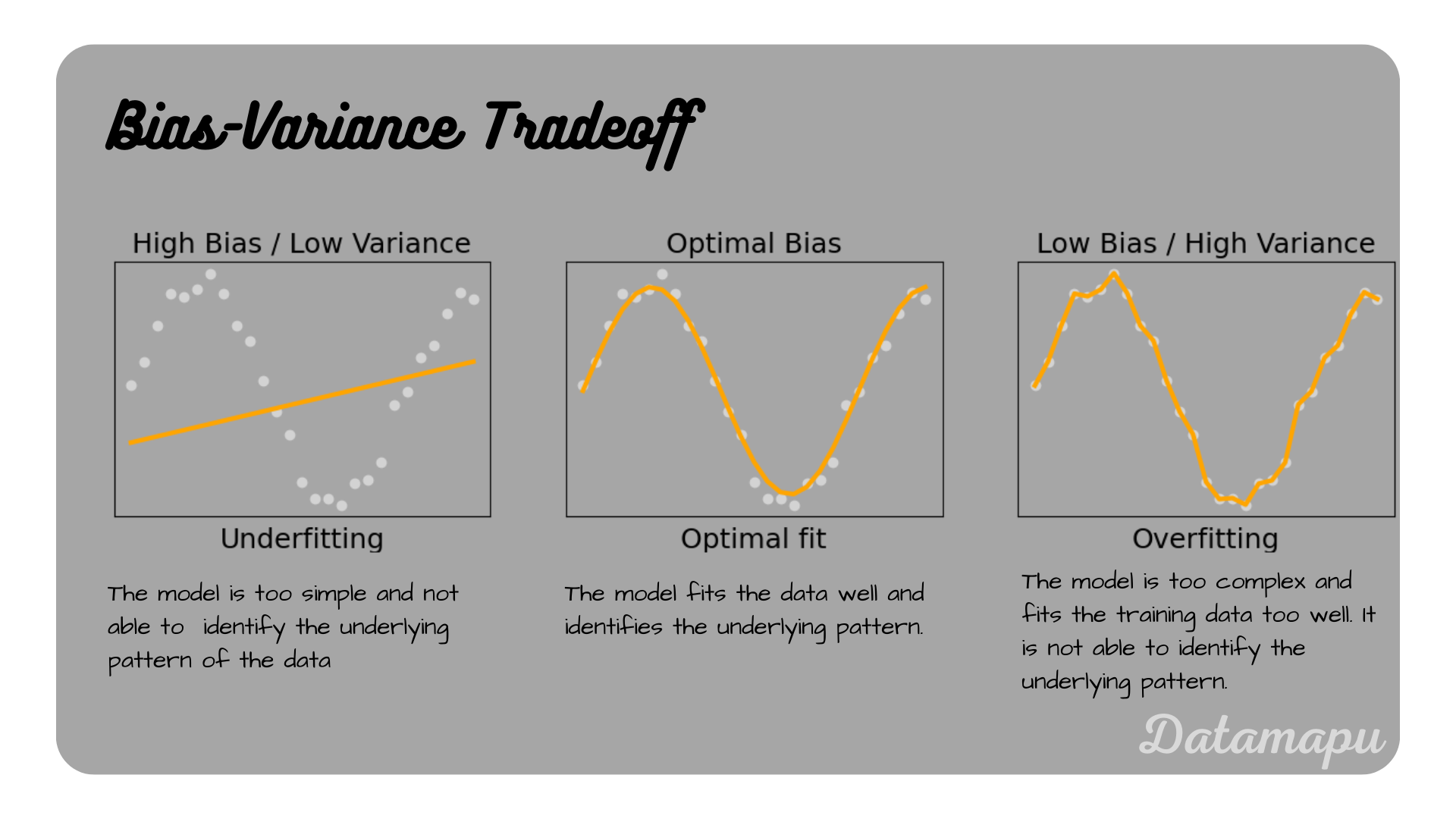 Underfitting and Overfitting illustrated for a regression problem.
Underfitting and Overfitting illustrated for a regression problem.
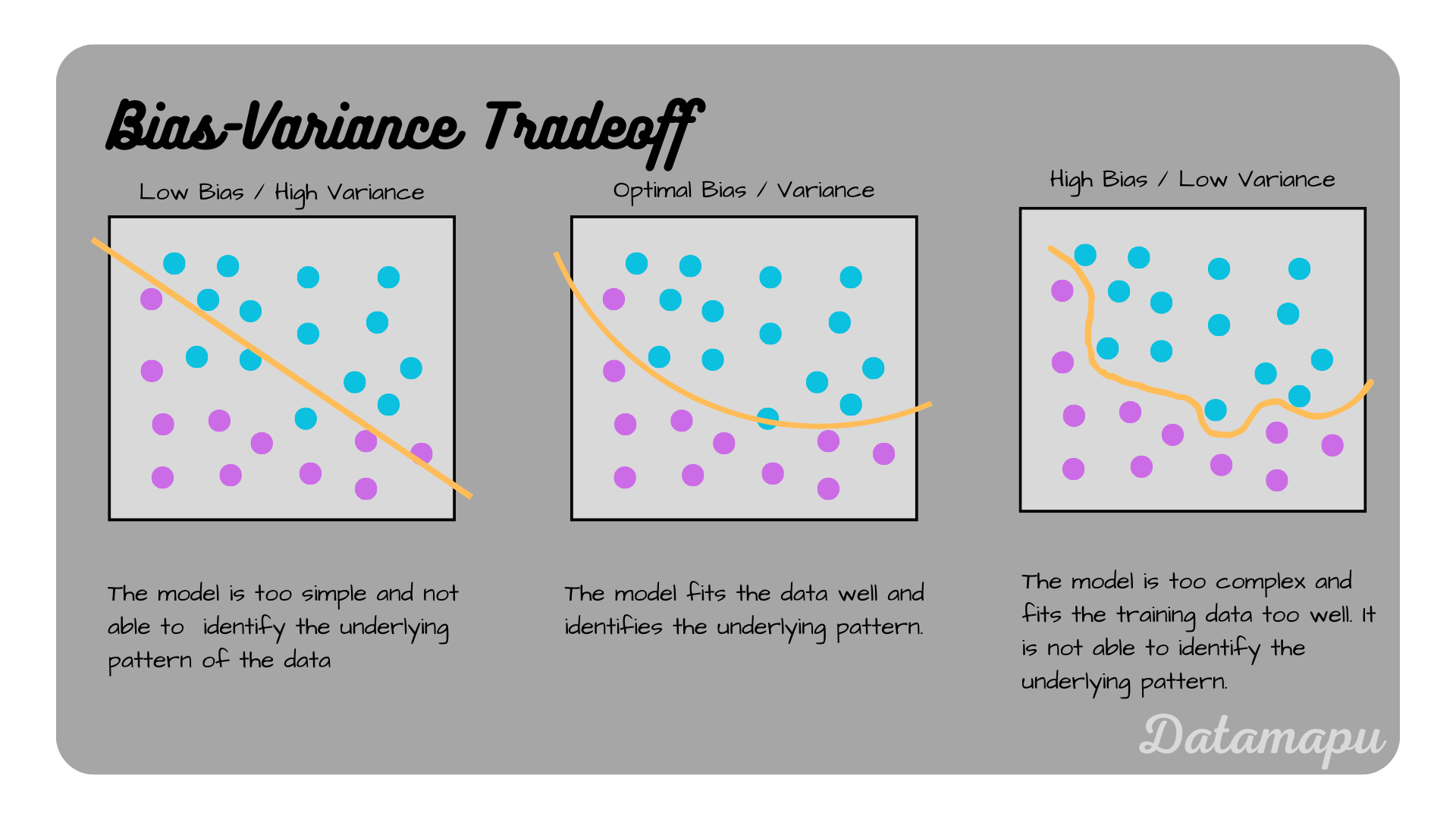 Underfitting and overfitting illustrated for a classification problem.
Underfitting and overfitting illustrated for a classification problem.
The relationship between the general error, Bias, and Variance can be illustrated as follows

Example
To illustrate the modelling of simple to complex models, we consider an example of a polynomial function, which is modeled by polynoms of different degrees.
| |
Plotting the different models against the “true model”
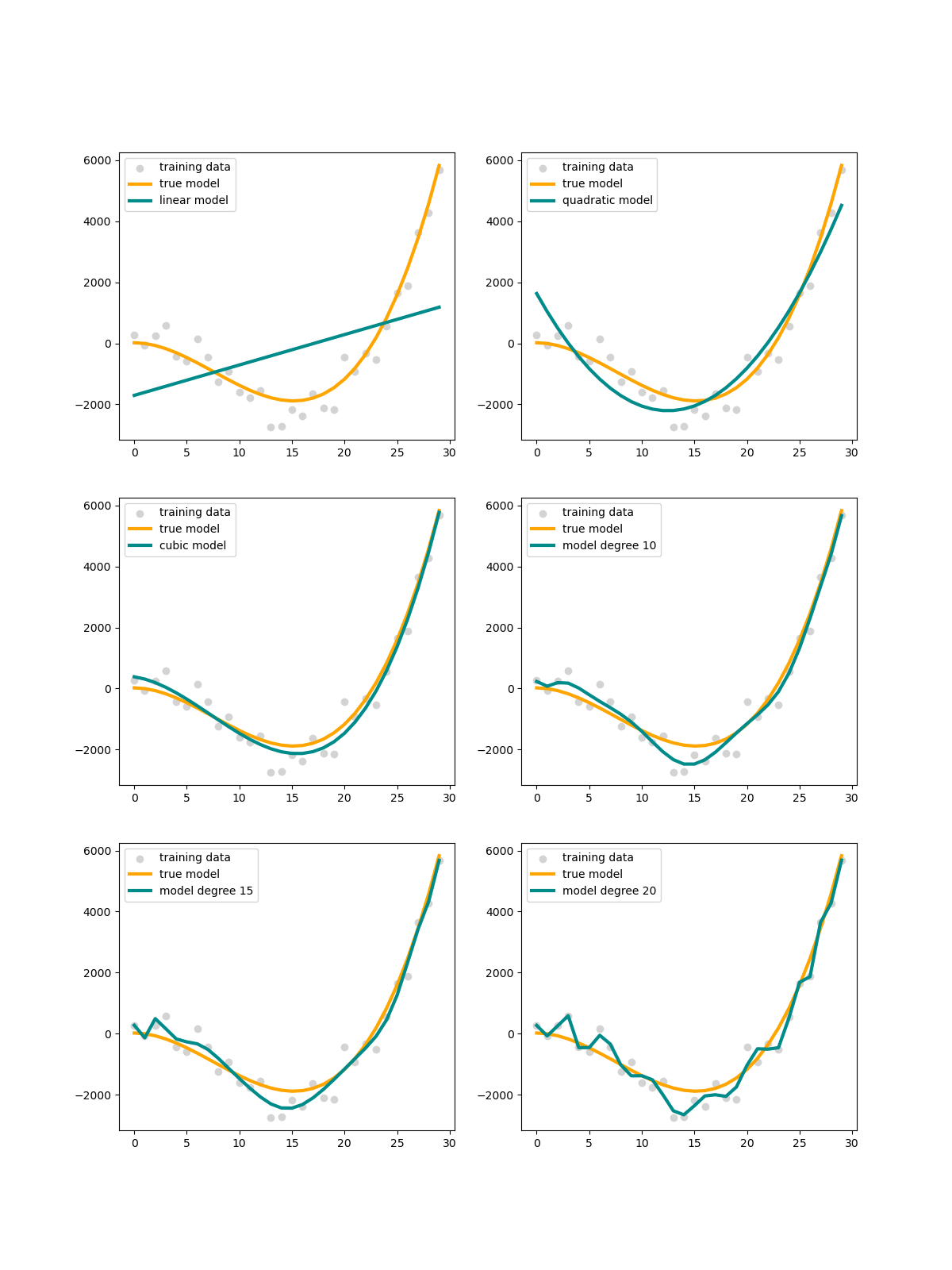 Example for polynomial models of different degrees.
Example for polynomial models of different degrees.
Summary
Bias and Variance are different types of errors in Machine Learning. Both high bias and high variance mean that a model is not able to understand the underlying pattern of the data and is therefore not able to generalize to new unseen data. In practice, it is important to balance bias and variance to achieve a good model.
Further Reading
Emmert-Streib F. and Dehmert M., “Evaluation of Regression Models: Model Assessment, Model Selection and Generalization Error”, machine learning and knowledge extraction (2019), DOI: 10.3390/make1010032
If this blog is useful for you, please consider supporting.
